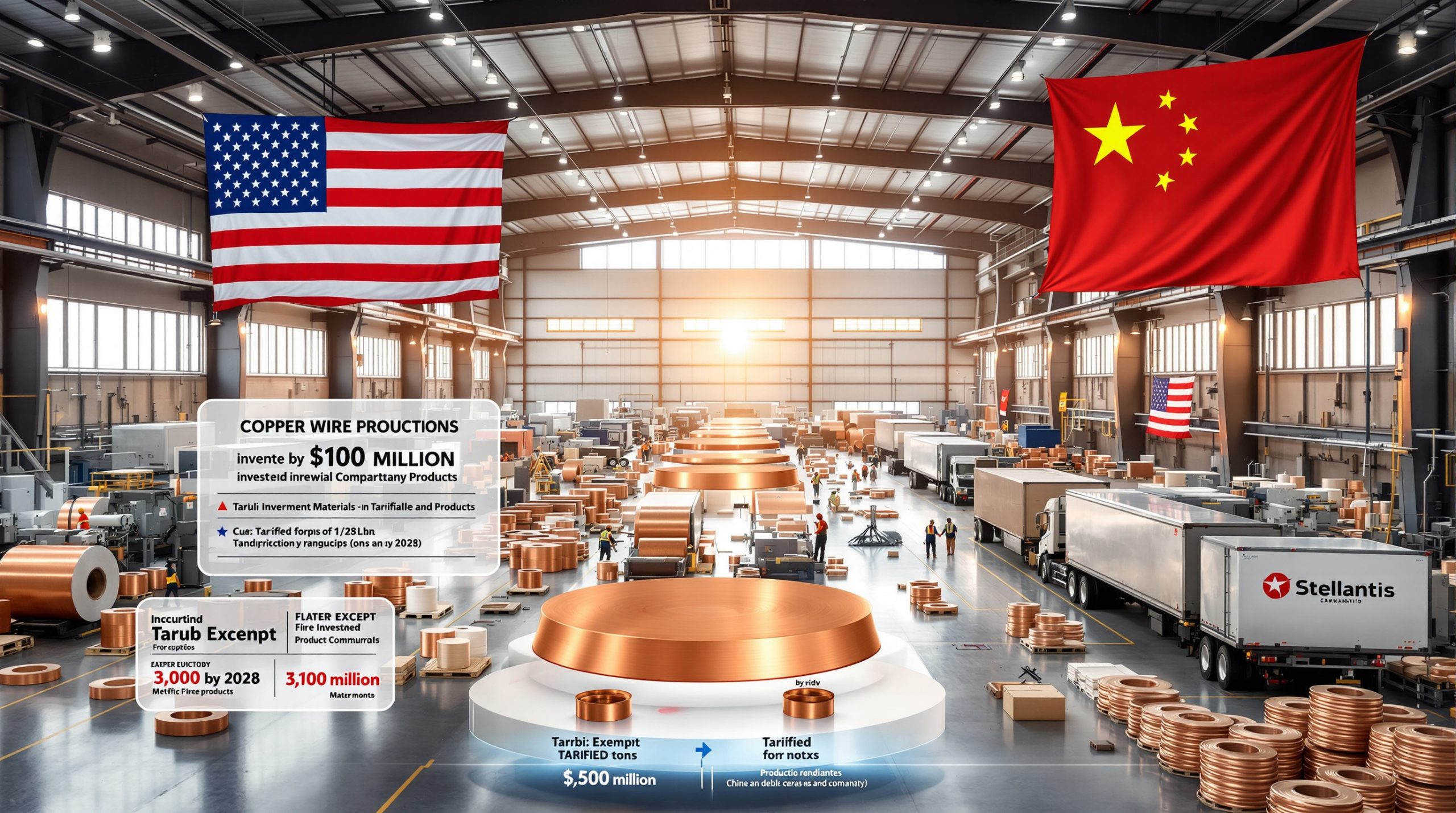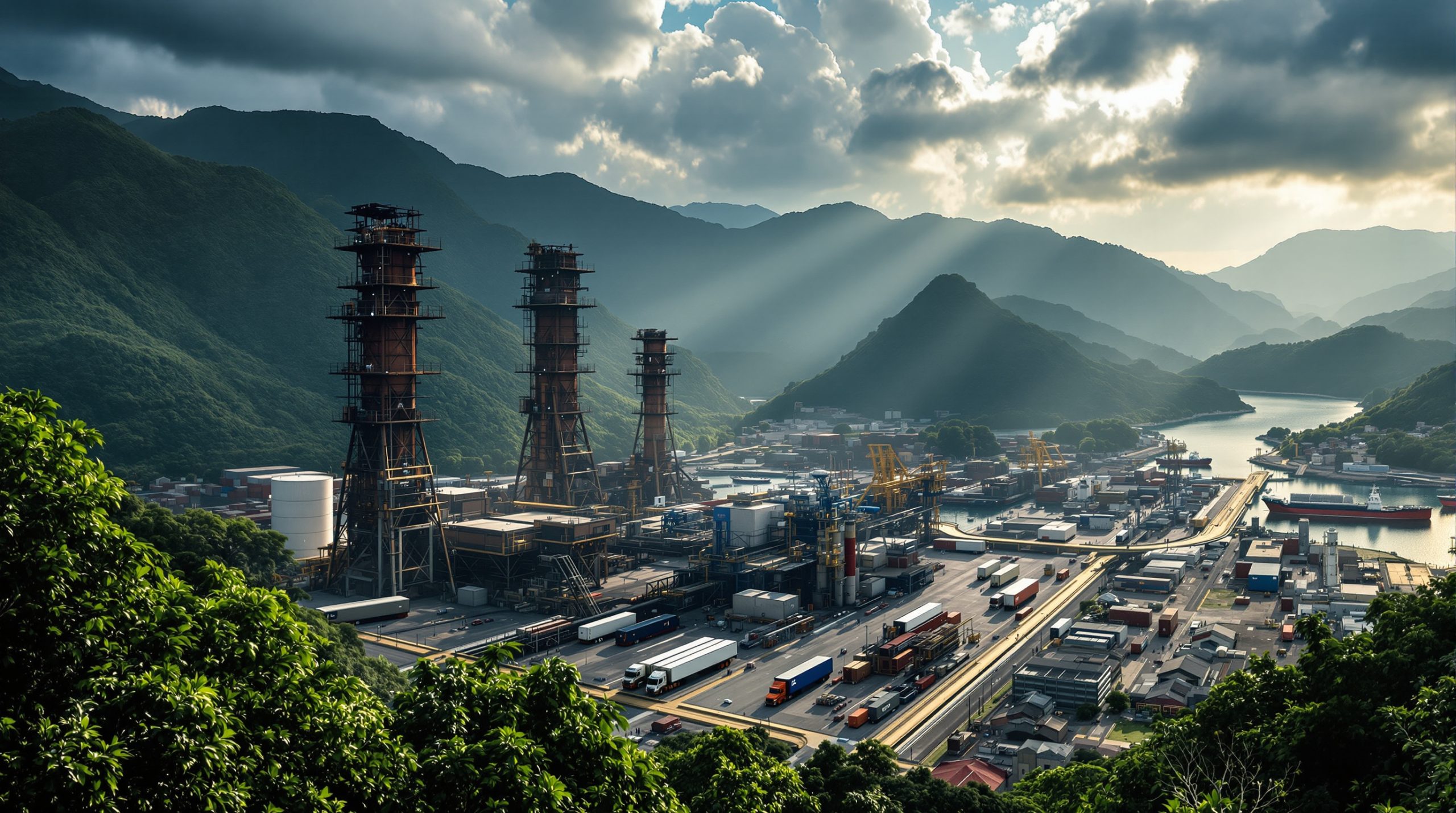What is Fluorspar and Why is it Critical for Electric Vehicles?
Fluorspar, also known as fluorite, is a mineral composed of calcium fluoride (CaF₂) containing 51.1% calcium and 48.9% fluorine by weight. This mineral serves as the primary global source of fluorine for industrial applications, particularly in the rapidly expanding electric vehicle sector. Despite receiving less attention than lithium, fluorspar plays an equally crucial role in battery production.
The Chemical Composition and Properties of Fluorspar
Fluorspar is classified as calcium fluoride (CaF₂) and typically occurs in cubic crystals. These crystals can display a remarkable variety of colors including purple, blue, green, yellow, and completely colorless specimens. The mineral has a hardness of 4 on the Mohs scale and is characterized by its distinctive fluorescence under ultraviolet light—a property from which the element fluorine derives its name.
Commercial fluorspar is categorized into three main grades, each serving different industrial purposes:
- Acid-grade (acidspar): Contains ≥97% CaF₂ and is primarily used for chemical applications, particularly in battery manufacturing
- Metallurgical-grade: Contains 85-95% CaF₂ and is used in steel production as a flux to reduce melting points and remove impurities
- Ceramic-grade: Contains 85-96% CaF₂ and is used in glass and enamel manufacturing to create opacity and improve durability
Historical Uses vs. Modern Applications in Clean Technology
Fluorspar has been utilized in industrial processes for centuries, with traditional applications centered around metallurgy and chemical manufacturing. Historical uses include:
- Steel manufacturing, where it serves as a flux to reduce melting temperatures and remove impurities
- Aluminum production, where it's used to lower the electrolytic bath's melting point
- Refrigerant production, with chlorofluorocarbons (CFCs) and their replacements requiring fluorine derived from fluorspar
However, the growth trajectory of fluorspar demand has shifted dramatically with the rise of clean energy technologies. Modern applications that are driving increased demand include:
- Lithium-ion battery manufacturing for electric vehicles and energy storage
- Semiconductor production, where ultra-high purity hydrogen fluoride is essential for etching silicon wafers
- Nuclear fuel processing, which requires uranium hexafluoride for enrichment
The U.S. Geological Survey has classified fluorspar as a critical mineral due to its essential role in clean energy technologies and potential supply chain vulnerabilities. As EV production scales up globally, critical minerals energy security continues to grow in parallel.
How Does Fluorspar Enable EV Battery Technology?
Fluorspar isn't merely an additive in lithium-ion batteries—it's a fundamental component used extensively throughout the battery production process, affecting multiple critical components that determine battery performance, safety, and longevity.
The Role of Fluorine in Battery Electrolytes
The electrolyte enables lithium ions to flow between the anode and cathode, making it essential for battery function. Lithium hexafluorophosphate (LiPF₆) is the predominant electrolyte salt used in commercial lithium-ion batteries, and its fluorine content comes directly from fluorspar.
- Quantity required: A 100 kWh battery requires approximately 17.5-24 kg of LiPF₆
- Fluorine content: This represents 13.1-18.1 kg of fluorine
- Performance benefits: Enables optimal ionic conductivity (>10 mS/cm at room temperature) and electrochemical stability across a wide voltage window
- Stability functions: Forms a stable solid electrolyte interphase (SEI) layer that protects the electrodes and prevents continuous electrolyte decomposition
Despite ongoing research into alternative electrolyte systems, battery industry experts confirm that fluorinated electrolytes remain superior for commercial applications due to their unique combination of properties. Major battery manufacturers including CATL, LG Energy Solution, and Samsung SDI continue to rely on LiPF₆-based electrolytes for their mainstream products.
Fluorinated Binders in Battery Electrode Manufacturing
To create functional electrodes, active materials must be bound together and attached to current collectors. This critical function relies on fluorinated polymers, particularly polyvinylidene fluoride (PVDF).
- Primary binder material: Polyvinylidene fluoride (PVDF)
- Quantity in batteries: A 100 kWh battery uses approximately 6-8 kg of PVDF
- Fluorine content: Contains 3.5-4.75 kg of fluorine
- Key properties: Provides excellent adhesion to current collectors, chemical stability against electrolyte degradation, and electrochemical performance across wide temperature ranges (-40°C to +60°C)
PVDF's unique properties make it particularly well-suited for lithium-ion batteries. It remains stable in the presence of aggressive electrolyte components and doesn't degrade during charging and discharging cycles. This stability contributes significantly to battery longevity and safety.
Graphite Anode Purification Process
The graphite used in battery anodes must meet extremely high purity standards. This purification process relies heavily on hydrofluoric acid (HF) derived from fluorspar.
- Purification method: Raw graphite is refined using hydrofluoric acid to remove silicate impurities
- Consumption rate: Processing anodes for a 100 kWh battery requires 7.5-15 kg of HF
- Fluorine content: Contains 7-14 kg of fluorine
- Quality impact: Ensures the graphite meets the stringent purity requirements (>99.95%) for battery applications
The purification process is essential for producing battery-grade graphite that can withstand thousands of charge-discharge cycles. Impurities in the graphite would otherwise lead to capacity loss, reduced cycle life, and potential safety issues. While alternative purification methods are being researched, HF-based processes remain the industry standard for achieving the necessary purity levels.
Beyond these three primary applications, fluorinated compounds are also used in separator materials and as electrolyte additives that enhance battery performance and safety. The pervasive use of fluorine throughout the battery manufacturing process underscores fluorspar's critical role in enabling the electric vehicle revolution.
What Are the Quantitative Requirements for Fluorspar in EVs?
The scale of fluorspar demand for electric vehicle production is substantial and often underappreciated in discussions about battery materials. Concrete numbers reveal the magnitude of this requirement and help forecast future demand growth.
Fluorspar-to-Battery Capacity Ratio Analysis
A direct relationship exists between battery capacity and fluorspar requirements:
- Conversion ratio: Approximately 1.1 kg of fluorspar is needed per 1 kWh of battery capacity
- For a typical 100 kWh EV battery:
- Total fluorine required: 31.1-51.7 kg (average of 41.4 kg)
- Lithium content comparison: Approximately 11 kg of lithium
- Raw fluorspar equivalent: Approximately 109.5 kg
This means a standard Tesla Model S with its 100 kWh battery pack requires roughly 110 kg of fluorspar just for battery production. This requirement is particularly striking when compared to lithium, the namesake element of lithium-ion batteries. By weight, a battery requires approximately four times more fluorine than lithium, highlighting fluorspar's overlooked importance in the supply chain.
Comparative Material Requirements in EV Batteries
| Material | Amount Required for 100 kWh Battery | Primary Application |
|---|---|---|
| Fluorspar | ~109.5 kg | Multiple battery components |
| Lithium | ~11 kg | Cathode active material |
| Graphite | ~70-100 kg | Anode material |
| Nickel | ~40-80 kg (depending on chemistry) | Cathode material |
| Cobalt | ~4-30 kg (depending on chemistry) | Cathode material |
This comparison illustrates that fluorspar requirements are substantial compared to other critical battery materials. Different battery chemistries also impact fluorspar demand in varying ways:
- LFP (Lithium Iron Phosphate) batteries still require similar amounts of fluorine for electrolytes and binders, even with their cobalt-free chemistry
- NMC (Nickel Manganese Cobalt) batteries use comparable fluorine quantities but have different overall material profiles
- Solid-state batteries under development may actually increase fluorine requirements due to specialized fluorinated interface materials
Forecasting Future Demand Based on EV Growth Projections
- Current global EV battery production: ~500 GWh (2023)
- Projected global capacity by 2030: 3-4 TWh according to BloombergNEF's New Energy Outlook 2023
- Corresponding fluorspar demand: 3.3-4.4 million tonnes annually for EV batteries alone
- Compound annual growth rate (CAGR): Estimated at 25-30% through 2030
These projections indicate that EV battery production alone could require 3-4 million tonnes of fluorspar annually by 2030, representing a significant portion of current global production (approximately 7 million tonnes according to the U.S. Geological Survey). This growth trajectory creates both challenges and opportunities for the fluorspar supply chain.
Regional demand forecasts show particular concentration in areas with rapidly growing EV manufacturing capacity:
- China: Projected to require 1.5-2 million tonnes annually by 2030
- Europe: Estimated demand of 0.8-1.2 million tonnes annually by 2030
- North America: Forecasted demand of 0.6-0.9 million tonnes annually by 2030
The fluorine intensity of batteries is significantly higher than most other critical minerals on a per-kWh basis, creating a substantial but often overlooked demand driver for global fluorspar markets.
Why is Fluorspar Supply Chain Security Becoming Critical?
As electric vehicle adoption accelerates globally, securing stable supplies of fluorspar has become a strategic priority for manufacturers and governments alike. Several factors contribute to the growing concern about fluorspar supply chain security.
Global Production and Concentration Risks
The global fluorspar market faces significant concentration risks that could impact availability and pricing:
- Top producing countries: China (
60% of global production), Mexico (15%), Mongolia (~5%) - Supply vulnerabilities: Geographic concentration, export restrictions, processing bottlenecks
- Price volatility: Historical fluctuations of 30-40% annually based on supply constraints
China's dominance in fluorspar production creates particular concern, especially given past precedents with export quotas and restrictions on other critical minerals. The U.S. Geological Survey reports that China has implemented export controls on fluorspar in the past, creating price spikes and supply uncertainty for international buyers.
Beyond raw material production, the processing infrastructure for converting fluorspar to battery-grade fluorine compounds is even more concentrated. High-purity hydrogen fluoride production, a key intermediate step, requires specialized equipment and expertise that exists in a limited number of facilities globally.
Environmental Considerations in Fluorspar Mining
Environmental factors also affect the security and sustainability of fluorspar supply:
- Water usage: Processing requires significant water resources, typically 3-5 cubic meters per tonne of concentrate
- Waste management: Tailings contain potential contaminants requiring careful containment
- Land reclamation: Post-mining restoration presents challenges, particularly for open-pit operations
- Regulatory landscape: Increasingly stringent environmental standards affecting production costs and project development timelines
Environmental scientists note that responsible fluorspar mining can be achieved with proper water management and waste containment systems. However, implementing these best practices adds to production costs and may limit the development of new deposits in environmentally sensitive areas.
Strategic Initiatives for Supply Chain Resilience
In response to these challenges, various stakeholders are pursuing initiatives to enhance fluorspar supply chain security:
- Domestic resource development: Nations including the U.S., Canada, and European critical materials countries are actively supporting exploration and development of local fluorspar resources
- Recycling potential: Research into technologies for fluorine recovery from spent batteries and other fluorine-containing waste streams
- Substitution research: Ongoing efforts to reduce fluorine dependency in battery technologies, though commercial viability remains distant
- Strategic reserves: Consideration of stockpiling programs similar to those established for rare earths and other critical minerals
The U.S. Department of Energy identifies fluorspar as a critical material for clean energy supply chains, while the European Union's Critical Raw Materials Act 2023 includes fluorspar in its list of strategic raw materials. These designations have prompted increased government support for domestic fluorspar project development.
Transportation and logistics considerations further complicate fluorspar supply security. The mineral's relatively low value-to-weight ratio makes long-distance transportation economically challenging, creating advantages for deposits located near processing facilities or end-users. This factor has prompted interest in developing integrated supply chains that minimize transportation requirements.
How Are Battery Technologies Evolving Regarding Fluorspar Use?
The battery industry continues to evolve, with implications for future fluorspar in electric vehicles demand patterns. Research and development efforts are exploring various approaches to battery chemistry, some of which could affect fluorine requirements.
Next-Generation Battery Chemistries and Fluorine Requirements
Different emerging battery technologies have varying implications for fluorspar demand:
- Solid-state batteries: May require different fluorinated compounds but potentially in higher quantities due to specialized fluorinated interface materials
- Sodium-ion batteries: Currently still utilize fluorinated electrolytes and binders similar to lithium-ion batteries
- Lithium-sulfur: Reduced fluorine requirements per kWh but still dependent on fluorinated components for stability
- Flow batteries: Generally lower fluorine intensity per kWh but face challenges in mobile applications
Battery researchers acknowledge that while progress is being made on alternative electrolyte systems, fluorinated compounds remain superior for commercial applications in the near term. Major battery manufacturers are investing billions in research and development, but fluorine-free batteries are not expected to reach commercial scale before 2030 for most applications.
The U.S. Department of Energy's ARPA-E program has funded several research initiatives focused on developing fluorine-free battery technologies, recognizing both the supply chain vulnerabilities and environmental considerations associated with fluorinated compounds. However, these alternatives typically face performance trade-offs, particularly in energy density, cycle life, or operational temperature range.
Recycling and Circular Economy Approaches
Recycling presents another pathway to reducing primary fluorspar demand:
- Current status: Limited commercial-scale fluorine recovery from batteries
- Technological barriers: Complex separation of fluorinated compounds from mixed waste streams
- Economic factors: Recovery economics improving with scale and technology advancements
- Regulatory drivers: Emerging battery recycling mandates in EU, Asia, and North America
Battery recycling innovations are advancing rapidly, but most current processes focus on recovering high-value metals like cobalt, nickel, and lithium rather than fluorinated compounds. The relatively low value of fluorine compared to these metals has limited investment in fluorine recovery technologies. However, as battery volumes increase and processing technologies improve, the economics of fluorine recovery are expected to become more favorable.
The European Union's proposed Battery Regulation includes specific targets for recovery of battery materials, which could drive increased investment in technologies that can recover fluorinated compounds from end-of-life batteries. Similar regulatory frameworks are being considered in other regions, potentially accelerating the development of circular economy approaches for fluorine.
Research Directions for Reducing Fluorine Dependency
Several research avenues are being pursued to reduce fluorine requirements in batteries:
- Alternative binders: Water-based binders showing promise for specific applications, particularly in lithium iron phosphate (LFP) batteries
- Novel electrolytes: Research into non-fluorinated ionic liquids and polymer electrolytes
- Process innovations: Less fluorine-intensive graphite purification methods using alternative acids or thermal treatments
- Performance trade-offs: Balancing reduced fluorine use against battery performance metrics such as energy density, cycle life, and safety
Technical comparisons show that current fluorine-free alternatives typically face performance limitations. For example, aqueous electrolytes offer improved safety but operate in a narrower voltage window, reducing energy density. Similarly, alternative binders may provide adequate adhesion but often show reduced chemical stability or temperature tolerance compared to PVDF.
While complete elimination of fluorine from battery technologies remains a long-term research goal, incremental reductions through optimized formulations and processing techniques offer more immediate potential for reducing fluorspar demand per kWh of battery capacity.
What Does the Investment Landscape Look Like for Fluorspar?
The growing recognition of fluorspar's importance to the energy transition is creating new investment opportunities and challenges. Understanding the development timeline, economics, and risk factors is essential for stakeholders considering involvement in this sector.
Emerging Fluorspar Projects and Development Timelines
Several regions are seeing increased activity in fluorspar project development:
- North America: Projects under development in Canada, Mexico, and the United States aim to reduce import dependency
- Europe: Exploration and development initiatives in Spain, Germany, and the United Kingdom support EU critical minerals strategy
- Australia: Emerging projects linked to broader critical minerals strategies and Asian market access
- Development timeline: Typically 5-8 years from discovery to production for major fluorspar projects
The capital requirements for developing new fluorspar projects vary significantly based on scale, location, and processing requirements. Major projects typically require $100-500 million in capital investment according to mining industry estimates. This substantial capital requirement creates barriers to entry, particularly for junior mining companies.
The permitting process for fluorspar projects can be complex due to the mineral's chemical properties and potential environmental impacts. Environmental permitting typically requires comprehensive water management plans, tailings storage facility designs, and mine reclamation innovation strategies. These factors contribute to the extended development timeline for new projects.
Integration with Broader Critical Minerals Strategies
Fluorspar is increasingly included in national critical minerals policies:
- National policies: Inclusion in critical minerals lists in US, EU, Japan, and Australia
- Financial incentives: Tax benefits, grants, and loan guarantees for domestic production
- Supply chain mapping: Increasing focus on tracking fluorine from mine to battery
- International partnerships: Emerging government-to-government agreements on mineral security
The U.S. Defense Production Act provides funding mechanisms for critical mineral projects, including those focused on fluorspar and downstream fluorine compounds. Similar programs exist in the European Union under the European Raw Materials Alliance and in Japan through JOGMEC (Japan Oil, Gas and Metals National Corporation).
These government initiatives are creating more favorable conditions for fluorspar project development, particularly for projects located in regions seeking to reduce import dependency. Mining industry analysts note increasing investor interest in fluorspar projects due to these policy supports combined with projected demand growth from the EV sector.
Risk Assessment for Fluorspar-Dependent Industries
Investors and industrial consumers of fluorspar must consider several risk factors:
- Supply disruption scenarios: Potential production impacts from supply constraints
- Price sensitivity: Battery cost implications of fluorspar price volatility
- Technological obsolescence: Monitoring alternative technologies that could reduce demand
- Regulatory considerations: Evolving environmental standards affecting production and use
Battery manufacturers and automotive companies are increasingly including fluorspar in their supply chain risk assessments. Some are pursuing vertical integration strategies or long-term supply agreements to mitigate these risks. Others are supporting research into alternative technologies that could reduce their exposure to fluorspar supply constraints.
Project financing for fluorspar developments faces particular challenges due to the mineral's relatively low profile compared to other battery metals investment options. Educating investors about fluorspar's critical role in the EV supply chain remains an ongoing challenge for project developers. However, increasing awareness of supply chain vulnerabilities is gradually improving the financing environment for well-positioned projects.
How Can the Fluorspar Supply Chain Support Sustainable EV Growth?
Ensuring adequate and sustainable fluorspar supplies will be crucial to meeting ambitious electric vehicle adoption targets. This requires balancing production expansion with environmental stewardship and technological innovation.
Balancing Supply Expansion with Environmental Stewardship
Sustainable development of fluorspar resources requires attention to environmental impacts:
- Best practices in mining: Water recycling, energy efficiency, and waste minimization
- Processing innovations: Less chemical-intensive beneficiation methods
- Certification schemes: Emerging standards for responsibly produced fluorspar
- Life cycle assessment: Comprehensive environmental footprint analysis
Environmental scientists note that fluorspar mining typically has a lower carbon intensity than many other critical minerals. However, water management remains a particular challenge for fluorspar operations. Advanced water recycling technologies can significantly reduce freshwater consumption, with some modern operations achieving water recycling rates above 80%.
Proper handling of fluorine-bearing wastes requires specialized containment systems to prevent environmental contamination. Tailings storage facility design has advanced significantly in recent years, with increased focus on long-term stability and minimizing seepage risks. These improvements contribute to more sustainable operations but also increase capital and operating costs.
Technological Innovations in Fluorspar Processing
Several technological advances are improving the efficiency and sustainability of fluorspar production:
- Improved recovery rates: Advanced flotation and separation technologies increasing yield from ore
- By-product recovery: Extracting valuable co-products like rare earths from fluorspar ores
- Energy efficiency: Reducing the carbon footprint of processing through equipment optimization
- Modular processing: Smaller, more flexible processing facilities that can be located closer to mines
Advanced sensor-based sorting technologies allow for more precise separation of fluorspar from waste rock, reducing the amount of material that requires energy-intensive processing. Some operations report 15-20% reductions in energy consumption through the implementation of these technologies.
The recovery of valuable by-products can significantly improve the economics of fluorspar operations. Many fluorspar deposits contain rare earth elements, barite, or other valuable minerals that can be recovered through modified processing circuits. This co-production model enhances resource efficiency and economic viability.
Policy Recommendations for Sustainable Development
Policy frameworks can support sustainable fluorspar development:
- Resource mapping: Comprehensive geological surveys to identify new deposits
- Permitting efficiency: Streamlined but rigorous approval processes
- Research funding: Support for fluorine efficiency and recycling technologies
- International standards: Harmonized approach to responsible production
Government geological surveys play a crucial role in identifying and characterizing potential fluorspar resources. Enhanced funding for these activities can accelerate the discovery of new deposits, particularly in regions seeking to develop domestic supply chains.
Permitting processes that are both efficient and environmentally rigorous are essential for responsible resource development. Some jurisdictions are implementing "one-stop-shop" permitting approaches that coordinate multiple regulatory requirements while maintaining high environmental standards.
Research funding for technologies that improve fluorine efficiency in batteries or enable fluorine recovery from waste streams can support long-term sustainability goals. Public-private partnerships have proven effective in accelerating these technology developments.
International standards for responsible fluorspar production could help ensure that increased production doesn't come at the expense of environmental or social values. Industry associations and multilateral organizations are beginning to develop such standards, though implementation remains at an early stage.
FAQs About Fluorspar in Electric Vehicles
What is the difference between fluorspar and fluorine?
Fluorspar is the mineral form of calcium fluoride (CaF₂), while fluorine is the elemental form (F) that is extracted from fluorspar for industrial applications. Fluorspar serves as the commercial source material from which fluorine compounds are produced for various uses, including EV batteries. The mineral contains 48.9% fluorine by weight, making it the most economical source of this reactive element for industrial purposes.
Can fluorspar be recycled from used EV batteries?
While technically possible, commercial-scale recycling of fluorine compounds from EV batteries remains limited. Current battery recycling focuses primarily on recovering valuable metals like lithium, cobalt, and nickel. The relatively low value of fluorine compounds compared to these metals has limited investment in fluorine recovery technologies. However, as battery volumes increase and technologies improve, fluorine recovery is expected to become more economically viable. Emerging EU battery regulations may accelerate this development by establishing specific recovery targets for battery materials.
Are there alternatives to fluorspar in battery production?
Research is ongoing into alternative battery chemistries that reduce or eliminate fluorine dependency. However, current commercial lithium-ion batteries still rely heavily on fluorinated components for optimal performance. Complete substitution remains a long-term research goal rather than an immediate solution. Alternative electrolyte systems face challenges in matching the performance of fluorinated electrolytes, particularly in terms of electrochemical stability, conductivity, and temperature range. Similarly, alternative binders typically show reduced chemical stability or temperature tolerance compared to fluorinated polymers.
How does fluorspar mining impact the environment?
Fluorspar mining can have environmental impacts including water usage, potential acid mine drainage, and habitat disruption. However, modern mining practices implement various mitigation measures such as water recycling, progressive reclamation, and tailings management to minimize these impacts. The environmental footprint of fluorspar mining is typically lower than that of many other critical minerals in terms of carbon intensity, but water management remains a particular challenge. Advances in water recycling technologies have enabled significant reductions in freshwater consumption at modern operations.
Will fluorspar become a supply bottleneck for EV production?
Without significant investment in new production capacity, fluorspar could potentially constrain EV manufacturing growth. However, increased awareness of its importance is driving exploration and development of new sources, which could alleviate potential supply constraints if developed in a timely manner. The typical 5-8 year development timeline for new fluorspar projects means that investments made now will be crucial to meeting projected demand in the 2030 timeframe. Government support through critical minerals strategies is helping to accelerate some project developments, particularly in regions seeking to reduce import dependency.
Further Exploration:
Readers interested in learning more about critical minerals in electric vehicle technology can also explore related educational content on China's EV battery Achilles heel, which offers additional perspectives on the role of various minerals in the clean energy transition.
Ready to Stay Ahead of ASX Discovery Opportunities?
Discover the power of real-time mineral discovery alerts with Discovery Alert's proprietary Discovery IQ model, transforming complex exploration data into actionable investment insights. Visit https://discoveryalert.com.au/discoveries/ to see how historic mineral discoveries have generated exceptional returns and begin your 30-day free trial to position yourself ahead of the market.




